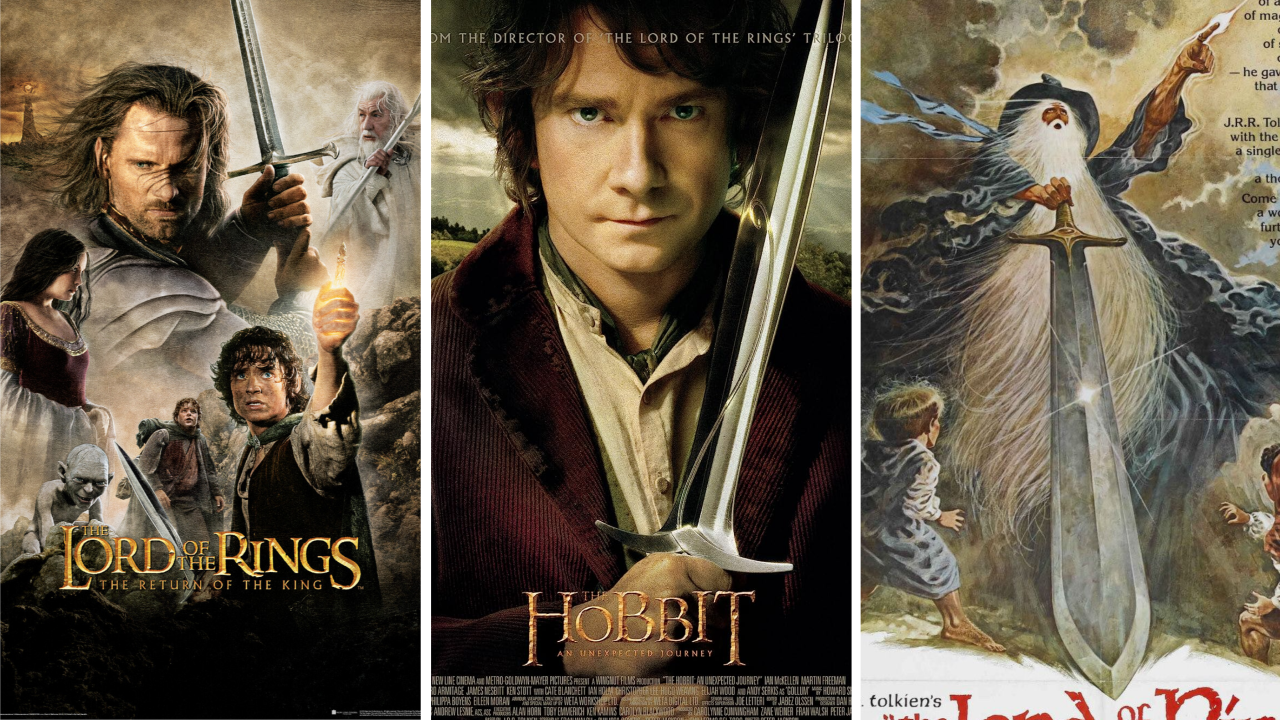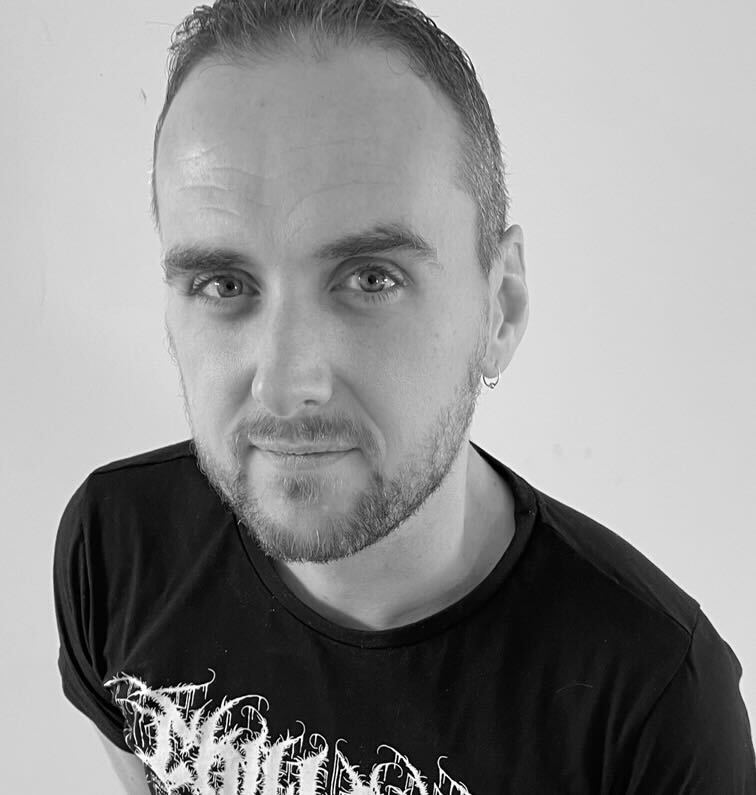J.R.R. Tolkien's The Lord Of The Rings novels changed fantasy writing forever. Laying the foundations of the genre's position as a cornerstone of geek culture, it eventually paved the way for the likes of Terry Pratchett, J.K. Rowling, George R.R. Martin and countless other to build their own magical, complex and interconnected worlds. The books also established numerous fantasy tropes that have remained a foundational part of literature for decades.
It was inevitable, then, that attempts would eventually ensue to bring The Lord Of The Rings - and its entertaining but drastically less epic prequel The Hobbit - to the big screen. From Ralph Bakshi's influential animated epic to Peter Jackson's troubled Hobbit trilogy, Middle Earth's presence on the big screen is almost as storied as the world of the books themselves. Here, then, is every big screen Middle Earth outing so far, ranked in reverse order of awesomeness (NB: for the purpose of this list, we're counting official cinematic releases only, not TV specials or series).

7. The Hobbit: The Battle Of The Five Armies (2014)
While entertaining enough in its own right and featuring more action in a couple of battle scenes than its predecessors managed across entire movies, there was just something a little empty about the grand conclusion to Peter Jackson's Hobbit trilogy. Given Richard Armitage's full-hearted performance and the fact that we've spent three full films with the character, Thorin's death should feel far more impactful than it actually does (Boromir's demise in The Fellowship Of The Ring packs far more of a punch after less than a third of the screen time), and by the time Billy Connolly turns up as a hog-riding Dwarf looking for a scrap, it's all starting to feel a bit daft. It's far from a failure, but ultimately, The Battle Of The Five Armies confirmed what we'd all suspected for a while: that this story really didn't need to be three films long.
6. The Lord Of The Rings (1978)
Despite some badly aged animation and ultimately failing to quite live up to the grandeur of its source material, Ralph Bakshi's stab at bringing The Lord Of The Rings to life absolutely has its charms. For an animated film, it can be delightfully dark at times (the ringwraiths remain a terrifyingly hyperreal nightmare), and its cast do a fine job of breathing life into Tolkien's characters. Unfortunately, the plot breezes through too much of the books' content in its two-and-a-bit hours runtime, while budget issues meant that the film's sequels never saw the light of day, meaning we get left hanging without ever getting to see Sauron's forces finally vanquished. Still, Peter Jackson has regularly referenced this film as an influence on his own trilogy, so it absolutely deserves respect.
5. The Hobbit: The Desolation Of Smaug (2013)
For the most part, The Desolation Of Smaug feels like all the evidence you need that less really can be more. Featuring a ton of newly added narrative threads, needless cameos and a convoluted plot involving burying Smaug under a big, melted statue (like, really?), there are lots of visual oohs and ahhs to be found, but so much of it just feels like padding. Thank heavens, then, for Benedict Cumberbatch: his deliciously sinister performance as Smaug elevates the film dramatically, bringing the mischievous dragon to life in style and, with the help of some spectacular SFX, creating one of the most enduring baddies from Peter Jackson's franchise.
4. The Hobbit: An Unexpected Journey (2012)
Plagued by production issues, with original director Guillermo del Toro jumping ship and Peter Jackson given little time to properly steer things back on course, the first entry in The Hobbit saga had all the makings of a disaster. Luckily, not only was disaster averted, but An Unexpected Journey is a damn fine film in its own right. Martin Freeman proves to be an inspired piece of casting as the beleaguered but determined Bilbo Baggins, and despite a slow start, the movie eventually throws out some brilliant set-pieces (the escape through the Misty Mountains is objectively ridiculous, but what a ride). Sadly, Jackson's baffling decision to shoot the film in such a high frame rate makes everything look a bit too surreal, muddying the majestic visuals that made The Lord Of The Rings such a visual feast. That Misty Mountains song is a banger, mind.
3. The Lord Of The Rings: The Return Of The King (2003)
How on earth do you separate the three individual entries in the most perfectly realised cinematic trilogy in history, especially given that they were all essentially shot as one film? Truthfully, any of Peter Jackson's three Lord Of The Rings movies could justifiably take the number one spot here, but The Return Of The King just slips down a couple of pegs given that its (still epic) battle scenes aren't quite as iconic as what came before it, and the subplot with The Army Of The Dead feels ever so slightly rushed (which is why you need the extended editions in your life, by the way). Still, this is a damn near perfect end to a classic trilogy that deservedly swept the Oscars - an astonishing achievement for a fantasy film whichever way you cut it.
2. The Lord Of The Rings: The Fellowship Of The Ring (2001)
If anyone had any doubt that the man behind Bad Taste and Braindead had the chops to bring such an epic and influential fantasy novel to life, those doubts evaporated the second we got the first, breathtaking view of the Shire alongside Howard Shore's heart-tugging Concerning Hobbits score. From the magnificent casting choices (we dare anyone to return to the source material and not imagine Ian McKellen as Gandalf), to the mind-blowing special effects, to the stunningly realised set-pieces ("Fly, you fools!"), Jackson's trilogy opener is an unmitigated triumph. How incredible, then, that its sequel would arguably somehow one-up it.
1. The Lord Of The Rings: The Two Towers (2002)
Picking your favourite of the Lord Of The Rings trilogy is like picking a favourite child. If, however, we were asked to stand in a court of law to justify our decision to place The Two Towers atop the podium, we'd point to three key arguments: 1) Jackson's world is every bit as beautifully realised as before, except with even bigger stakes and an even more epic feel to everything; b) we get our first full dose of Andy Serkis' exceptional, game-changing performance as Gollum; and c) Gandalf leading the Rohirrim into battle at Helm's Deep is not only a shout for the most magnificent scene in the whole series, but for one of 21st century cinema's most thrilling segments. That it takes place in synergy with the Ents' march on Isengard, itself an absolutely cracking piece of fantasy action, makes it even more of a knock-out.
The Two Towers proved that Jackson's success with The Fellowship Of The Ring was no fluke, and that we were in the midst of an all-time great film franchise being unveiled before our eyes. Over two decades on, fantasy cinema has yet to better it. The Hobbit may have steered Jackson's Middle Earth saga away from perfection, but at this particularly moment in time, it reached its peak power.
- Best TV and film streaming services: Get the best bang for your buck

